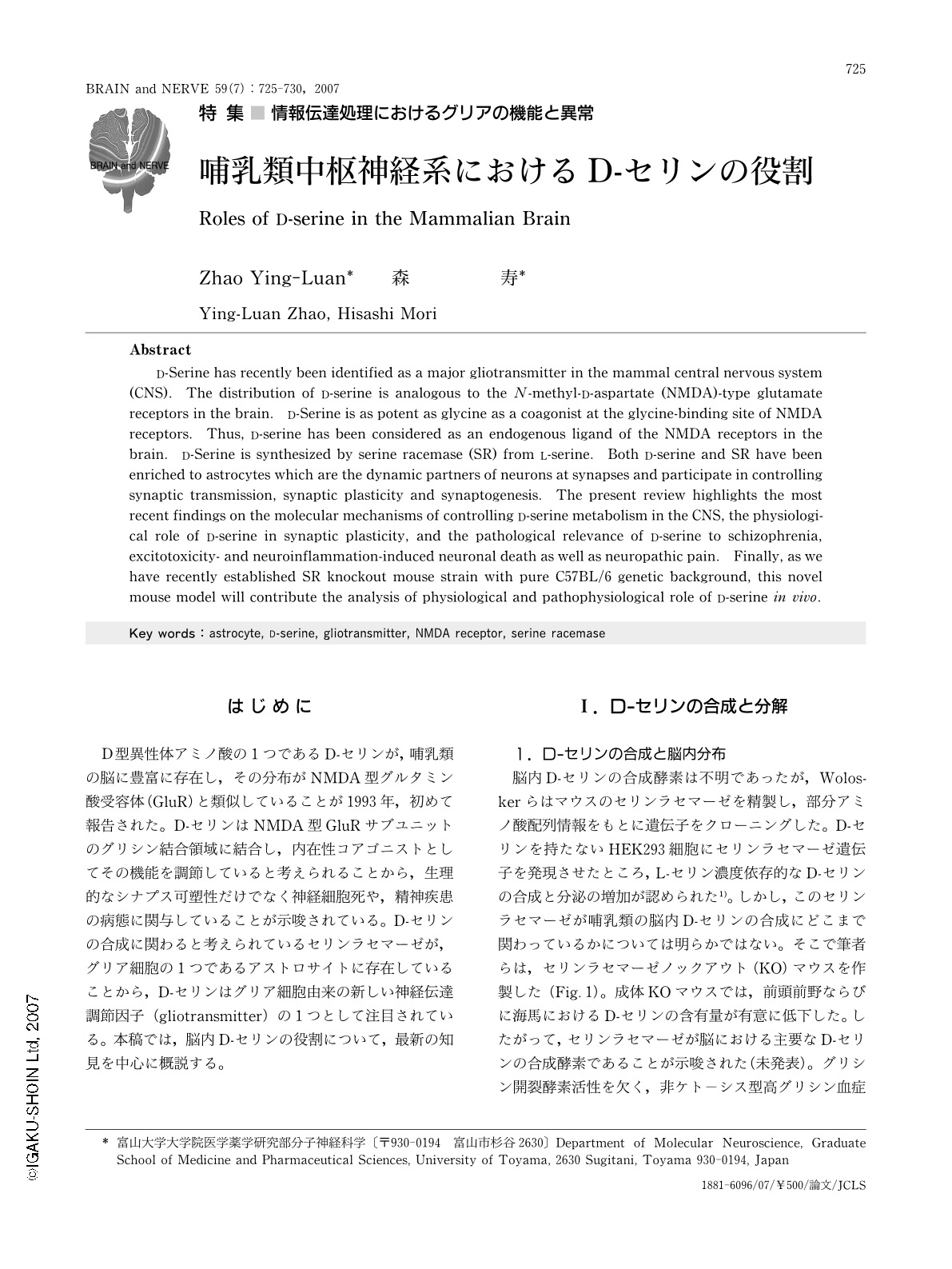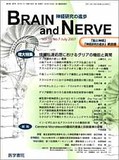Japanese
English
- 有料閲覧
- Abstract 文献概要
- 1ページ目 Look Inside
- 参考文献 Reference
はじめに
D型異性体アミノ酸の1つであるD-セリンが,哺乳類の脳に豊富に存在し,その分布がNMDA型グルタミン酸受容体(GluR)と類似していることが1993年,初めて報告された。D-セリンはNMDA型GluRサブユニットのグリシン結合領域に結合し,内在性コアゴニストとしてその機能を調節していると考えられることから,生理的なシナプス可塑性だけでなく神経細胞死や,精神疾患の病態に関与していることが示唆されている。D-セリンの合成に関わると考えられているセリンラセマーゼが,グリア細胞の1つであるアストロサイトに存在していることから,D-セリンはグリア細胞由来の新しい神経伝達調節因子(gliotransmitter)の1つとして注目されている。本稿では,脳内D-セリンの役割について,最新の知見を中心に概説する。
Abstract
D-Serine has recently been identified as a major gliotransmitter in the mammal central nervous system (CNS). The distribution of D-serine is analogous to the N-methyl-D-aspartate (NMDA)-type glutamate receptors in the brain. D-Serine is as potent as glycine as a coagonist at the glycine-binding site of NMDA receptors. Thus, D-serine has been considered as an endogenous ligand of the NMDA receptors in the brain. D-Serine is synthesized by serine racemase (SR) from L-serine. Both D-serine and SR have been enriched to astrocytes which are the dynamic partners of neurons at synapses and participate in controlling synaptic transmission, synaptic plasticity and synaptogenesis. The present review highlights the most recent findings on the molecular mechanisms of controlling D-serine metabolism in the CNS, the physiological role of D-serine in synaptic plasticity, and the pathological relevance of D-serine to schizophrenia, excitotoxicity- and neuroinflammation-induced neuronal death as well as neuropathic pain. Finally, as we have recently established SR knockout mouse strain with pure C57BL/6 genetic background, this novel mouse model will contribute the analysis of physiological and pathophysiological role of D-serine in vivo.

Copyright © 2007, Igaku-Shoin Ltd. All rights reserved.


